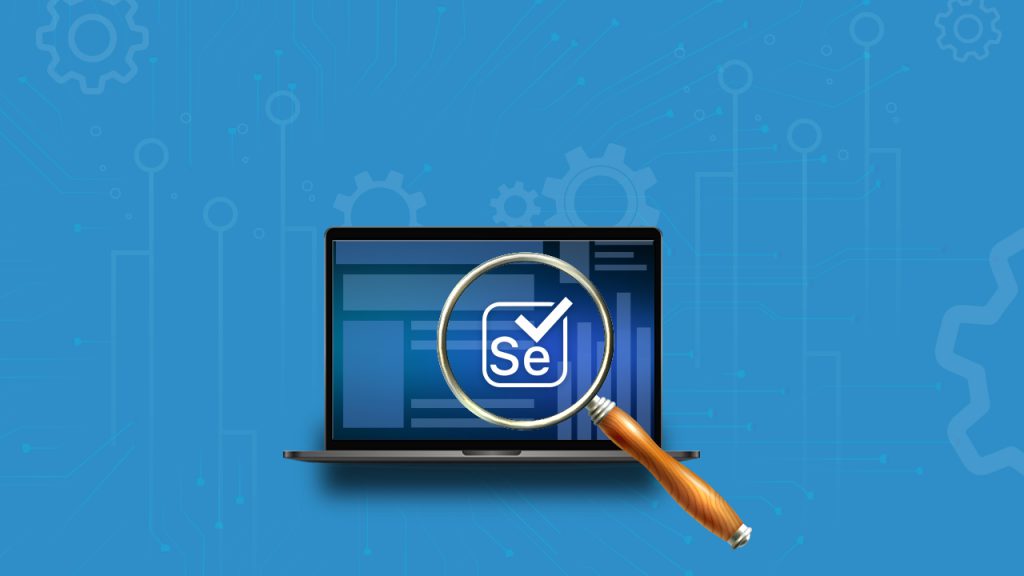Automation Testing With Selenium
In the world of software applications, the demand for the newest and latest version is rising tremendously. Developers are working harder to deliver upgrades quite frequently leading to the growing adoption of automation. The use of automation frameworks in the code development and software testing process helps businesses shorten their software development cycle and eases the developers throughout the testing process.
Automation testing has helped teams launch new features without bugs at a much faster pace. This, in turn, helps maintain high customer engagement and ward off competition.
Automation testing has also increased the scale of testing by several folds, ensuring that customers have a fulfilling experience, no matter which browser or the device they use. And thus, automation testing made its way to ensure cross-browser compatibility.
In this blog, we will go through the understanding of Selenium, its various frameworks, and the usage of Selenium.
What is Selenium?
Selenium is a suite of tools for automating web browsers and API automation. Among one of the biggest open-source automation testing suites that have been making testing seamless, Selenium is a widely used tool for software testing consultants and QA professionals. Selenium is one of the most widely used open-source Web UI (User Interface) automation testing suites. Currently, the Selenium Web driver is most popular with Java and C#.
Why is Selenium Framework so popular for Automation Testing?

Selenium is not just an automation tool. It is a suite of tools, and each tool in the suite has specific unique capabilities that help in the design and development of the automation framework. All these components can be either used individually or can be paired with one another to achieve a level of test automation. Selenium supports multiple frameworks like Maven, TestNG, PYTest, NUnit, Mocha, Jasmine, etc. Selenium integrates well with CI tools like Jenkins, Circle CI, GOCD, Travis CI, Gitlab, etc.
Selenium framework involves breaking the entire code into smaller pieces of code, which test a particular feature. It defines rules that are followed to achieve results. The framework operates by accepting commands, sending those commands to a browser, and interacting with applications. In selenium, there are many types of frameworks including linear scripting, modular testing, data-driven, hybrid, etc.
Types of Selenium frameworks and how they work:
- Linear Automation Framework:
Linear Scripting Framework is a basic level test automation framework that is in the form of ‘Record and Playback.
In this type, the creation, and execution of test scripts are done individually for each test case individually. It can generate test scripts with just Record and playback that require no coding knowledge. However, it lacks reusability due to autogenerated scripts. You cannot run the scripts with multiple data sets and the maintenance of this framework is high and requires a lot of effort to do even small changes.
- Modular Driven Framework – Modular-based test frameworks break down test cases into small modules. These modules are independently tested first and then the application is tested. This makes each test independent. Individual test scripts get combined to make larger master test scripts; this master script is used to invoke the individual modules to run end-to-end test scenarios.
The main reason for using this framework is to build an abstraction layer to safeguard the master module from any changes made in individual tests. It allows individual scripts that can be reused. The modules in this framework are independent and do not rely on each other. However, it takes more time to analyze test cases, and identifying reusable flows is hard. As it requires rewriting codes for different data sets, it needs coding skills.
This framework allows the test data set to be kept in the external files or resources such as MS Excel Sheets, MS Access Tables, SQL Database, XML files, etc. By using this framework we could easily make the test scripts work properly for different sets of test data. This framework improves test coverage and allows for faster execution. However, for every test case, you may need many data files which also need expertise in the scripting language.
In this framework, we need to create a set of keywords & data tables, its tests have a large resemblance with manual test cases. You can write a detailed test plan for better code reusability and create platform-independent test scripts. However, the framework requires keywords management.
- Hybrid Testing Framework: It’s a combination of various frameworks to leverage the advantages of some and mitigate the weaknesses of others. However, The framework can use scripts to perform some tasks that might be too difficult to implement in a pure keyword-driven approach. The framework requires tests that are completely coded (or script-based), thus increasing automation efforts.
- Behaviour Driven framework– Behaviour Driven Development (BDD) approach is most often focused on the behavior of users rather than the technical functions of the software. One of the common downsides when using these frameworks is that it is hard for non-technical people like Business analysts, management people to read and understand the test cases. But Behaviour driven testing can handle it. Examples of BDD framework are Cucumber (Ruby/JAVA/ NET/ Flex/ etc framework), Spec Flow (.NET framework), Behave (Python framework), J Behave Web (Java framework with Selenium integration), etc.
- Test-Driven Development (TDD) is a software development practice that focuses on an iterative approach that combines programming, the creation of unit tests, and refactoring.
QA developers need to create precise unit tests to verify the functionality of specific features. They must ensure that the test compiles so that it can execute.
In most cases, the test is bound to fail. This is a meaningful failure as developers are creating compact tests based on their assumptions of how the feature will behave. Then correcting the code, once a test fails, developers need to make the minimal changes required to correct the code so that it can run successfully when re-executed.
Benefits of using Automation testing with selenium
- Faster time-to-market: Using a good test automation framework helps reduce the time-to-market of an application by allowing constant execution of test cases. Once automated, the test library execution is faster and runs longer than manual testing.
- Reduced maintenance cost: Selenium reduces the cost of maintenance in automated testing as it includes scripts are created using simple algorithms. Writing Selenium scripts is not more than writing a few pieces of code to automate the functionalities of your website. It makes the process faster and more accessible.
- Reusable code: Selenium provides reusable test suites that can be tested across multiple browsers and operating systems. With the help of third-party frameworks and add-ons, you can always broaden your scope of testing.
- Allows building independent test scripts: Selenium allows to build test scripts, that are independent of the platform and applications under test.
- Reduces workload: Selenium is even helpful in reducing repetitive steps. For example, as a part of the migration process, you need to lock the source site just before the final migration.
Consider a situation when you are migrating content from a live website to SharePoint, where you are running short of time, and your content is huge. You do not have an option to bring it from the Database, you can download the content from all the source sites by using Selenium.
- Helps evaluate test results Selenium provides all the results showing where the application failed tests if any, within one report.
Final Thoughts
Although it is mainly used by computer software and IT services companies, Selenium has a broader scope of benefits for a variety of industries including Staffing & Recruitment, Healthcare, Financial Services, and many more. Other than validation, Selenium also helps you perform some web-based administration tasks, update site owners/members, banner upload of a site, change Site Features in the SPO site, etc.
To know more about our capabilities and best practices around Selenium or Automation Testing, pls. get in touch with one of our experts here.
Learn more about our software testing and QA services, here.

















